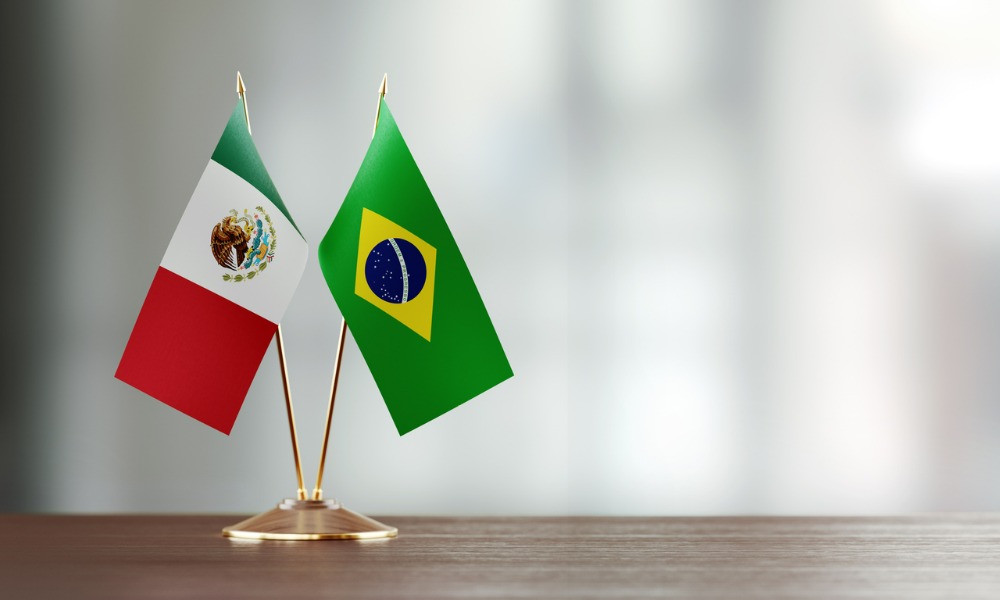Because of inflation and other factors, some developing markets are raising interest rates ahead of advanced economies

After a decade spent asking “how low can you go?” on interest rates, investors in developed countries are now wondering “how low can you stay?”. Eyes and ears are trained acutely on the U.S. Federal Reserve and other major central banks, as well as inflation and other economic indicators those policymakers watch, for any indication of when policy rates will start to rise.
But in a new note, Tom Nakamura of AGF Investments observes that while rate reductions might have happened in broad lockstep across the world, some emerging-market central banks are going ahead with their own rate hikes.
“[A] handful of central banks – including in Brazil, Chile, Mexico, Russia, Hungary and the Czech Republic – have raised rates over the past month or so, and in some cases dramatically,” Nakamura, vice-president and portfolio manager, Currency Strategy and co-head of Fixed Income, said.
One obvious reason why some developing markets are taking the lead in raising rates, Nakamura said, is the comeback of inflation. As per Reuters, annualized inflation in Brazil hit 8% in May, the highest it’s been for that month in nearly five years; Bloomberg reported that inflation in Hungary has topped 5%, far above its 3% target. Meanwhile, Mexico’s national statistics agency reported that inflation in the second half of July clocked in at 5.8% annualized, exceeding expectations.
“Given that many EMs have a long and troubled history of grappling with inflation and currency depreciation, pre-emptive rate hikes might not seem that surprising,” he said, noting that in several developing countries, no single specific market could be pinpointed as a driver of inflationary pressure. “Yet the return of EM inflation can also be seen as a positive signal for EMs, in the form of a return to economic growth.”
Another contributing factor, Nakamura said, is how EM central banks have more headroom on interest rates than they might have before. EM policymakers have tended to respond too hawkishly in previous global economic crises, he said, as they sought to protect their currencies. But when COVID-19 hit last year, they cut rates at historic speeds, weakening their currencies.
“[O]ne concern for many EMs during past recoveries was that higher rates would create unwanted currency strength, undermining exports,” he said. “[B]ecause rates – and currencies – started from such a low pandemic baseline, policymakers clearly view normalization as a relatively benign move.”
EMs are also different from developed economies, Nakamura said, in how mindful they must be about their deficits and investor confidence in their bonds. Because the market tends to reward countries that take an orthodox monetary policy approach, hiking rates – which in a high-inflation context can lower risk premiums overall while often strengthening the long end of EM yield curves – can be an ideal move.
Major central banks, including the Fed, the Bank of Japan, and the European Central Bank, have also signalled at least some inclination to remain accommodative. With those larger players anticipated to keep pumping liquidity into the global economy, Nakamura said EMs – along with some secondary developed economies like England, New Zealand, and Canada – can expect some cover to tighten “early.”
“[T]he global economy is emerging from the COVID-19 environment in a non-uniform way, and we can expect central banks in different jurisdictions to respond in an accordingly divergent manner. For fixed-income investors, this could present country-specific opportunities in sovereign debt, both because certain countries will roll over into higher-coupon debt and because tighter monetary policy might alleviate inflation concerns,” Nakamura said. “And the divergent rate environment could present some interesting plays across Emerging-Market versus developed-market currencies.”



